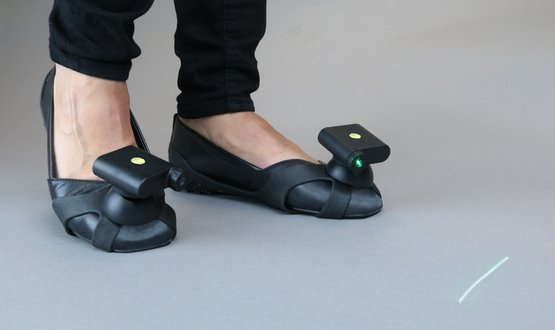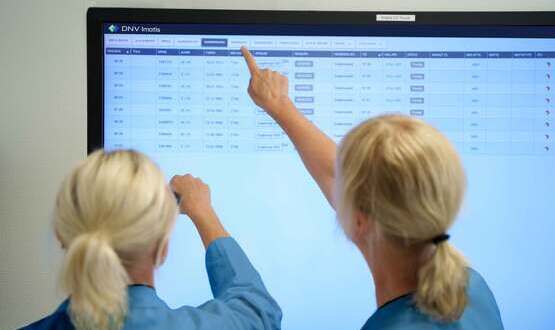Innovation focus: Helping people with Parkinson’s to walk more easily

For people with Parkinson’s disease, freezing episodes – in which it becomes impossible to move forward for several minutes – can be a particularly upsetting symptom. When Lise Pape saw how her father was affected by the condition, she became determined to design a device to help. Andrea Downey reports.
Freezing is a relatively common feature of Parkinson’s disease, and it is exactly what it sounds like – those who experience it describe feeling as though their feet are stuck to the ground, and they are left unable to move.
It is a symptom with which Lise Pape was familiar given her father’s experience of Parkinson’s. And she was quickly struck by how visual cues can make a difference.
“People with Parkinson’s can walk quite well on staircases because it provides a kind of rhythm as each step is a visual cue, essentially.
“One of the neurologists that we worked with described that people with Parkinson’s don’t necessarily lack the ability to walk, they lack the ability to initiate walking.”
The idea of using visual cues to support people with Parkinson’s isn’t a new concept. Light-up canes have been around for years but can be problematic if the light doesn’t shine in the right direction or the cane obstructs a patient’s steps.
So Lise – who has a master’s degree in innovation design engineering – set out to create a simple solution that wouldn’t obstruct a patient’s ability to walk.
“I became really interested in finding a wearable solution that you could have with you as opposed to having to change the environment around you every time you go somewhere which is just not practical,” she explains.
“Instead of having an actual obstruction I wanted to have something that was a visual obstruction so it wasn’t actually going to be in the way and pose a risk to the wearer.”
The result is Path Finder, a device that attaches to the shoe and has a laser pointer. Lise started working on the prototype in 2014 before the product was certified and sold for the first time in 2017.
The laser pointer provides a visual prompt for someone to follow when they walk.
It uses an accelerometer, embedded in the box the laser sits in. The device measures how a person walks and turns the laser cue on and off in time with their steps.
The device is not yet being provided on the NHS, but Lise says she and colleagues are in discussions to change that.
And they are working with teams at two NHS hospitals in London to see whether the device could be used to help people with other movement disorders, or those who are recovering from a stroke.




